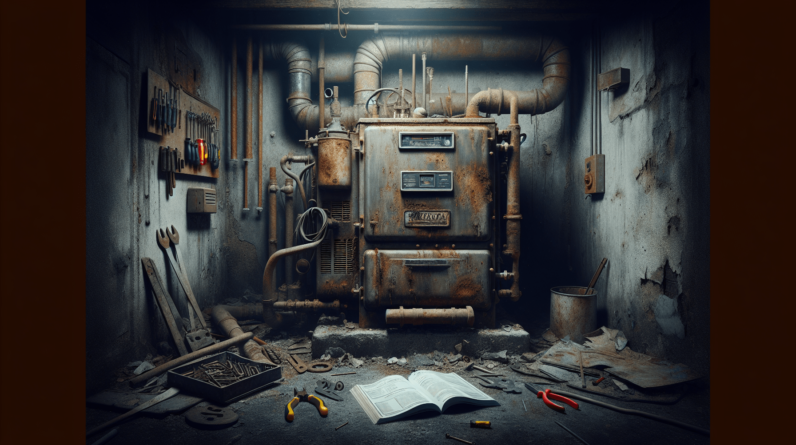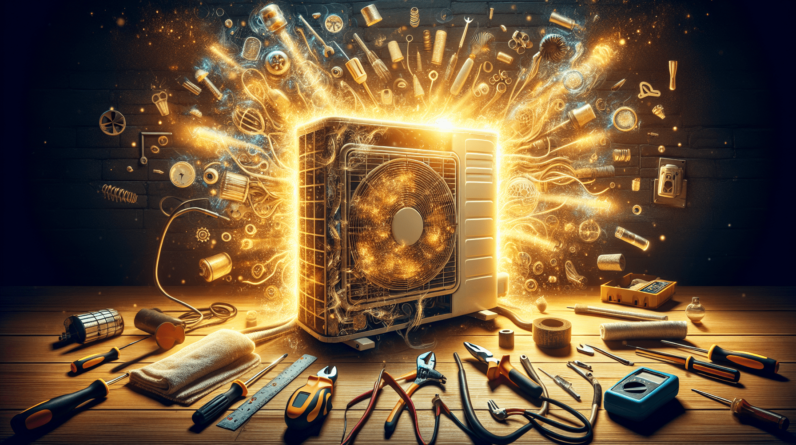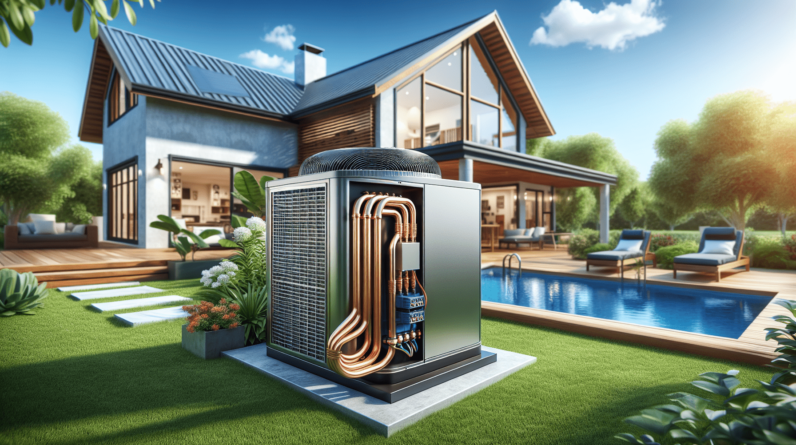

Have you ever wondered what the most common HVAC problem is? Well, rest assured you’re not alone. Whether you’re a homeowner, a renter, or a business owner, HVAC issues can be a major headache. From sudden temperature fluctuations to strange noises coming from the vents, it can be frustrating to figure out what’s causing the problem. In this article, we’ll explore the most common HVAC problem that many people encounter, and provide some tips on how to prevent it from happening in the first place. So, if you’re ready to uncover the mystery behind HVAC malfunctions, stay tuned!
HVAC Basics
Understanding HVAC Systems
Before we delve into the most common HVAC problems, it’s important to have a basic understanding of HVAC systems. HVAC stands for heating, ventilation, and air conditioning, and it refers to the technology that regulates the temperature, humidity, and air quality of a space. HVAC systems are used in both residential and commercial buildings, providing comfort and a healthy living environment for occupants.
Components of an HVAC System
To grasp how HVAC systems work, it’s crucial to familiarize yourself with their key components. A typical HVAC system consists of the following components:
- Furnace/Boiler: The furnace or boiler is responsible for producing heat, which is distributed throughout the building.
- Heat Pump: A heat pump can both heat and cool a space, depending on the season. It transfers heat from the outdoors to indoors during the winter and vice versa in the summer.
- Air Conditioning Unit: This component cools the air by removing heat and humidity from it, providing a comfortable indoor temperature during hot summer months.
- Thermostat: The thermostat acts as the control center for the HVAC system, allowing you to set and regulate the desired temperature.
- Ductwork: The ductwork ensures the proper distribution of air throughout the building, carrying heated or cooled air to various rooms.
- Air Filters: Air filters trap dust, dirt, and other particles, ensuring clean and healthy indoor air quality.
- Ventilation System: The ventilation system exchanges indoor and outdoor air, maintaining proper air circulation within the building.
Now that we have a basic understanding of HVAC systems, let’s explore the most common HVAC problems and their solutions.
Importance of HVAC Maintenance
Cost and Energy Efficiency
Maintaining your HVAC system is essential for several reasons, with cost and energy efficiency being one of the primary considerations. Regular maintenance helps to ensure that your system operates at optimal efficiency, reducing energy consumption and subsequently lowering your utility bills. By keeping your HVAC system in good condition, you can save a significant amount of money in the long run.
Indoor Air Quality
Another critical aspect of HVAC maintenance is maintaining indoor air quality. HVAC systems filter out pollutants and contaminants, preventing them from circulating in the air you breathe. However, if neglected, HVAC systems can become a breeding ground for dust, mold, and other allergens, negatively impacting your indoor air quality. Regular maintenance, including filter changes and system cleanings, helps to ensure clean and healthy air in your home.
Clogged Air Filters
Causes of Clogged Air Filters
One of the most common HVAC problems is clogged air filters. Clogging occurs when the air filters are not regularly cleaned or replaced. Over time, dust, dirt, pollen, and other particles accumulate on the filters, inhibiting airflow and reducing their effectiveness. Several factors can contribute to clogged air filters, including:
- Lack of regular filter maintenance
- Living in a dusty environment or near construction sites
- Pets with fur or shedding
- Poorly sealed ductwork that allows dust and debris to enter the system
Effects of Clogged Air Filters
Clogged air filters can have several detrimental effects on your HVAC system and indoor air quality. Some common effects include:
- Reduced airflow: When air filters are clogged, the system has to work harder to circulate air, resulting in reduced airflow throughout the building.
- Increased energy consumption: Restricted airflow requires the HVAC system to work longer and harder, consuming more energy and driving up utility bills.
- Dust and dirt buildup: Clogged air filters can lead to dust and dirt buildup on the system’s components, potentially causing damage and efficiency issues.
- Poor indoor air quality: When air filters are clogged, they are less effective at trapping pollutants, allergens, and other particles, leading to poorer indoor air quality.
Prevention and Solutions
To prevent clogged air filters and maintain a healthy HVAC system, follow these preventive measures:
- Regularly check and clean or replace air filters every 1-3 months, depending on usage and filter type.
- Consider using high-quality filters that capture smaller particles and provide superior filtration.
- Keep the area surrounding the HVAC system clean and free of debris.
- Have your HVAC system professionally inspected and maintained at least once a year.
By taking these preventive measures, you can ensure proper airflow and maintain clean and healthy indoor air quality.
Refrigerant Leaks
Signs and Effects of Refrigerant Leaks
Refrigerant leaks are another common HVAC problem that can have significant repercussions if left unaddressed. Signs of a refrigerant leak include:
- Reduced cooling capacity: If your air conditioner is blowing warm air or not providing sufficient cooling, a refrigerant leak could be the culprit.
- Ice buildup on coil or refrigerant lines: A refrigerant leak can cause the evaporator coil or refrigerant lines to freeze, leading to ice buildup.
- Hissing or bubbling sounds near the HVAC unit: Sometimes, you may hear hissing or bubbling sounds due to refrigerant leakage.
- High humidity indoors: A refrigerant leak can disrupt the dehumidification process, resulting in higher indoor humidity levels.
The effects of refrigerant leaks can be both costly and hazardous. Some common effects include:
- Reduced cooling efficiency: When refrigerant levels are low, the air conditioner has to work harder to provide the same level of cooling, leading to reduced energy efficiency.
- Increased energy consumption: A refrigerant leak forces the system to run longer and consume more energy to maintain the desired temperature.
- System damage: If the refrigerant leak is not promptly addressed, it can lead to compressor failure, which is a costly repair.
- Environmental impact: Many refrigerants used in HVAC systems are harmful to the environment and contribute to ozone depletion or climate change.
Causes of Refrigerant Leaks
Refrigerant leaks can occur due to various reasons, including:
- Wear and tear: Over time, the components of an HVAC system can degrade, leading to leaks in the refrigerant lines or connections.
- Poor installation: Improper installation practices, such as incorrect brazing or welding, can result in refrigerant leaks.
- Damaged coils or lines: Corrosion, physical impact, or other forms of damage to the evaporator coil or refrigerant lines can cause leaks.
- Normal system aging: As an HVAC system ages, the likelihood of refrigerant leaks increases, necessitating regular inspections and maintenance.
Repair and Prevention
If you suspect a refrigerant leak, it’s essential to address the issue promptly. Repairing a refrigerant leak should be done by a certified HVAC technician who can diagnose the leak, fix it, and recharge the system with the appropriate amount of refrigerant. To prevent refrigerant leaks:
- Schedule regular HVAC maintenance to catch potential leaks before they become major problems.
- Ensure proper installation by hiring experienced professionals who adhere to industry standards.
- Avoid physical damage to the evaporator coil and refrigerant lines by keeping the area around the HVAC unit clear.
- If your system has a history of refrigerant leaks, consider upgrading to a newer, more reliable model.
By taking these preventive measures and promptly addressing refrigerant leaks, you can protect your HVAC system, save energy, and contribute to a healthier environment.






